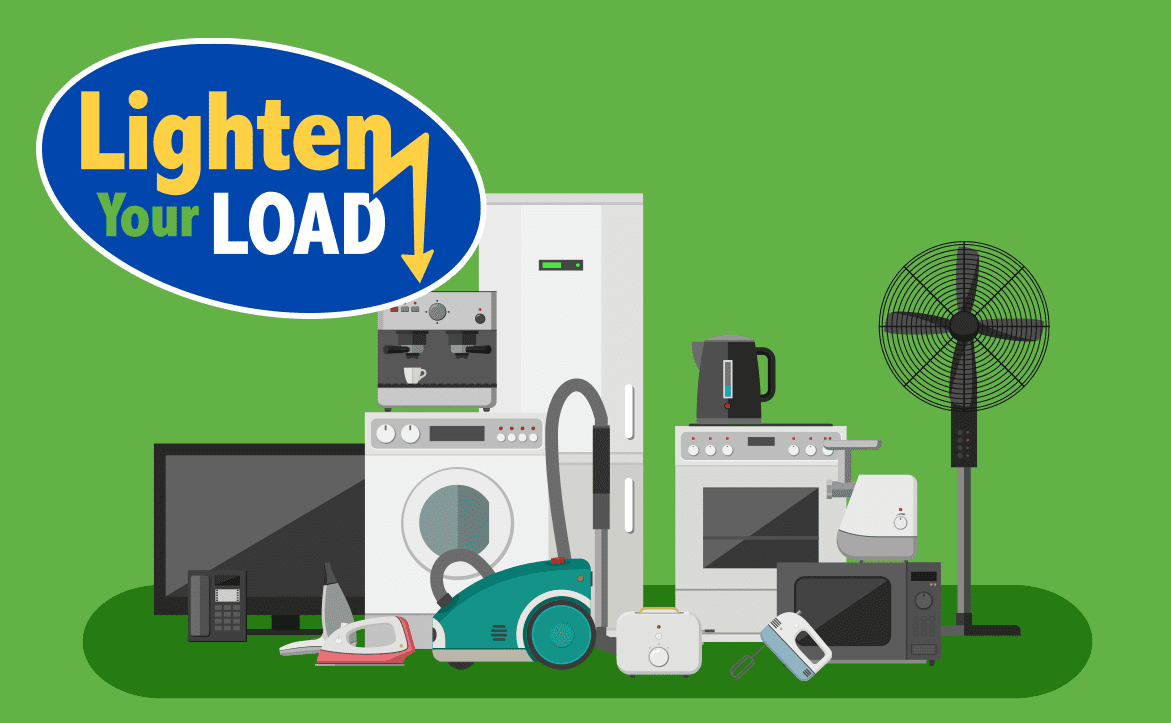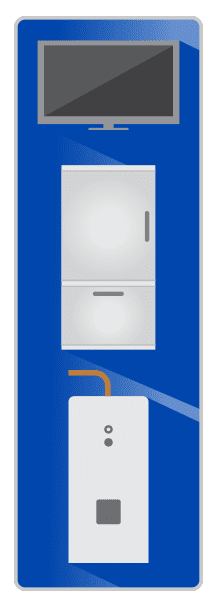
We’ve shared low-cost, no-cost, and advanced ways to save money on your electricity bill. Today, let’s look at what uses the most electricity in your home. This will give you the information you need to decide how to make impactful changes to your home’s energy use.
Please note that the percentages below are approximate. They can vary based on appliance efficiency, usage patterns, household size, etc.
Heating and cooling systems use approximately 40-50%.
These are all the appliances that keep the temperature in your home comfortable. If you have electric heat, heating your home uses the most energy. This can account for more than 30% of your electricity consumption. And if you have air conditioning, this number rises even higher. All told, your efforts to stay comfortable can use between 40% and 50% of the electricity in your home.
Water heaters use approximately 10-15%.
Electric water heaters are significant consumers of electricity. These can account for between 10% and 15% of a home’s energy usage. This can get higher in households with high hot water demand. Also, the older your water heater is, the less efficient it is. This causes it to use more electricity than newer models.
Refrigerators, freezers, dishwashers, dryers, and washing machines combined use approximately 8-15%.
Large home appliances use less electricity than furnaces, air conditioners, and water heaters. But since we use them daily, they can contribute to higher electricity bills. It’s important to know what to watch for when buying a new appliance.
Refrigerators and freezers are always on to keep food cold or frozen. Because of this, they can use significant electricity. Sometimes households have more than one fridge or freezer, which adds to the cost. Plus, those refrigerators and freezers will use even more energy to cool air if they aren’t full.
Clothes dryers, dishwashers, and washing machines can also use a lot of electricity. And the more frequently you use them, the more energy you’re using.
- Dishwashers use electricity to power motors, heating elements, and control systems. Many models have a heat dry setting, which can use a lot of energy.
- Clothes dryers use a lot of electricity to generate heat and tumble clothes.
- Washing machines use electricity to power motors and control systems. Some also have heat dry settings contributing to overall electricity usage.
Large electronics like computers and home entertainment systems use approximately 3-5%.
Televisions, home theater systems, gaming consoles, and desktop computers consume more electricity than you think. One reason is the power requirements for processing power. Another reason is that they’re often left on for a long time without you realizing it. Power savings modes still consume some electricity.
To help reduce your costs, focus on what works for you.
Knowing how your home uses electricity will help you make decisions to lower your costs. You can save the most by addressing the areas of significant energy consumption. Heating and cooling, for instance, represent major opportunities for savings. But upgrading them to more efficient models can be cost prohibitive. Also, if you rent, the choice might not be yours to make. (But you still have plenty of options to save on your electricity bill!)
The first step is to learn about your energy use. The next step is identifying which improvements to make. Then, decide what is best for your budget and home. We have rebates to help you offset these costs. Even if you can’t make a major upgrade now, you still have options. For heating and cooling, we’ve talked about how thermostats and weatherization can help. Small changes and habits can also help. Simple practices like turning off devices when not in use and air-drying clothes can make a difference. And always make sure you’re getting the most energy efficiency out of your appliances.
Saving energy is saving money. Plus, it’s good for the environment. There’s no time like now to start taking control of your home’s energy use and your energy costs.
